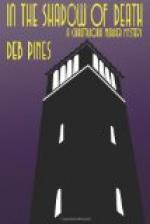These are some of the narrow corners in which we found ourselves during the war. I could multiply them, but ’tis needless. They will give the reader some idea of what we often had to pass through.
CHAPTER V.
TO THE CAPE COLONY.
From March to December, 1901, the area of war operations was limited exclusively to the two Republics. All the British forces were concentrated there. Gradually the fact dawned upon us that, unless we contrived to draw the British forces, in some way or other, off the Republics, the latter would eventually be exhausted of all provisions, which would necessitate their surrender. They could not for ever supply Boer commandoes and British columns with provisions, especially when farming pursuits were so disturbed and hampered by the enemy. It became quite clear that, in the event of a long campaign, our whole salvation would be in the Cape Colony. There we would be drawing on the enemy’s resources, and the British Government would indirectly be supporting us in compensating colonists for losses sustained by Boer commandoes. An additional advantage, should the scene of operations be transferred from the Republics to the Cape Colony, would be that many colonists would enlist in our ranks. There we should be constantly recruited, and our commandoes would increase rather than decrease. That was an advantage not to be despised, for our forces were getting daily weaker in the states.
[Illustration: GENERAL CHRISTIAN DE WET.]
With such facts before him, General De Wet planned a second invasion of the Cape Colony towards the close of the year 1901. By the end of November we met him with his forces, about 1500 strong, in the district of Bethulie. After a few days’ fighting with the forces of General Knox on the farms Goede Hoop and Willoughby, we left for the Orange River, which we intended to ford at Odendaal’s Stroom, a drift fifteen miles below Aliwal North.
As heavy rains began to fall, we were anxious to reach the river before it was in flood. Day and night through rain and mud we ploughed on towards the river. When we reached the Caledon River we saw that the water was rising rapidly, and began to fear that the Orange River, which was still thirty miles off, would be impassable. Well, we were going to try. We increased our speed, and left behind scores of tired horses and mules.
The 1st of December, at sunset, we arrived on the banks of the river. But what a disappointment! A rolling mass of water before us, so deep and strong that there was no chance to pass through. And there we were between two rivers in flood, with a narrow strip of country between them, and thousands of the enemy on our track. We knew that the English could seize the bridges, of which there are but a few, and could then be reinforced from all parts of the country to hem us in so closely that escape would be impossible. De Wet would at last be “cornered” and forced to surrender—so, at least, the enemy thought. Our situation seemed, nay was indeed, very critical.




